Where Sam Bradford’s game needs to grow to earn the Eagles’ trust

Your teams on the go or at home. Personalize SI with our new App. Install on iOS or Android.
It’s hard to believe Sam Bradford is only 28 years old, as it feels like he’s been around much, much longer than that. The No. 1 pick in 2010 has been a bit of everything to everybody: He was the Rams’ franchise savior for a while, then a source of frustration and disappointment in St. Louis when injuries, roster issues and scheme changes chipped away at the momentum from his Rookie of the Year campaign. He was Chip Kelly’s reclamation project when the Eagles coach traded for him before the 2015 season. Then this spring, he became persona non grata in Philadelphia when he signed a two-year contract extension, then balked at his role in a three-quarterback race as new Eagles coach Doug Pederson brought backup Chase Daniel with him from Kansas City and the team traded up to draft North Dakota State whiz-kid Carson Wentz with the No. 2 pick.
Bradford’s 2015 season wasn’t half bad. He completed 346 of 542 passes for 3,725 yards, 19 touchdowns and 14 interceptions, finishing as the 24th-ranked quarterback in Football Outsiders’ opponent-adjusted metrics, and Pro Football Focus’ 11th-ranked quarterback overall. The Eagles rewarded him for this with the extension, a deal worth up to $35 million with $22 million fully guaranteed and another $4 million guaranteed for injury that seemed to be a good stopgap for an injury-plagued player who has started 16 games just twice in his six-year career.
Then Bradford’s agent Tom Condon pushed his chips in with a trade demand, and Bradford skipped the beginning of voluntary workouts. The Eagles didn’t budge, and he was back in camp a few days before the start of OTAs with nothing but positive things to say about Philadelphia but with the same murky long-term outlook he faced as soon as Wentz heard his name called at the draft.
• QBs with the most to prove in 2016 | 10 head coaches under pressure
Jim Schwartz’s presence on Eagles staff worth his sound bites
“Clearly, if Sam’s in the locker room, all of the other players ... always know what’s going on ... they know that Sam’s a short-term guy, and he’s just there until the rookie is ready to go,” Condon said during the holdout on Andrew Brandt’s “Business Of Sports” podcast. “So that’s not a particularly favorable situation for [Bradford].”
The Eagles most likely won’t trade Bradford unless Daniel or Wentz blows them away at some point this year, but Bradford can make his biggest statement about his future in Philadelphia with his actions on the field this fall, and he needs to raise his game to get his message across. Does he still have that playoff-caliber starter potential in him? When you go to the tape from 2015, the answer isn't clear-cut.
Deep Passing
As a Heisman winner at Oklahoma, Bradford’s combination of deep passing and accuracy was truly special. His best year was 2008, when he threw 50 touchdown passes and led the nation with 11.1 adjusted yards per attempt. That has never carried over to the NFL, where his career AY/A is 6.1 and he has not been a threat to regularly test defenses vertically. Last year, he threw over 20 yards in the air on just 10.2% of his passes, ranking 29th in the league, and he threw what Pro Football Focus’ charters deemed catchable balls on just 40.7% of those attempts. Bradford pushes the ball a bit, and after playing behind subpar offensive lines in St. Louis he has learned to take the easy underneath shot to avoid the big hit. That’s not a bad mindset, but most starting quarterbacks without the ability to press defenses deep in this league will eventually be replaced.
• BEDARD: Re-grading the 2013 draft classes, three years later
2015 NFL draft trade grades: Early winners of last year’s deals
This 43-yard pass to slot receiver Jordan Matthews against the Redskins in Week 16 is a perfect example of what things could be like if Bradford is in the right system. Here, the Eagles’ offense stretches the field and keeps things tight underneath against man coverage, the inside blitz is defeated by the tight end route and Bradford has time to loft a perfect pass to Matthews over the head of cornerback Will Blackmon. Note how his body is bent back to collect the proper torque; his follow-through is a thing of beauty. With a clean pocket and an expansive offense, Bradford shows he can still find some magic with the deep ball. He should be given the opportunity to use it more often.
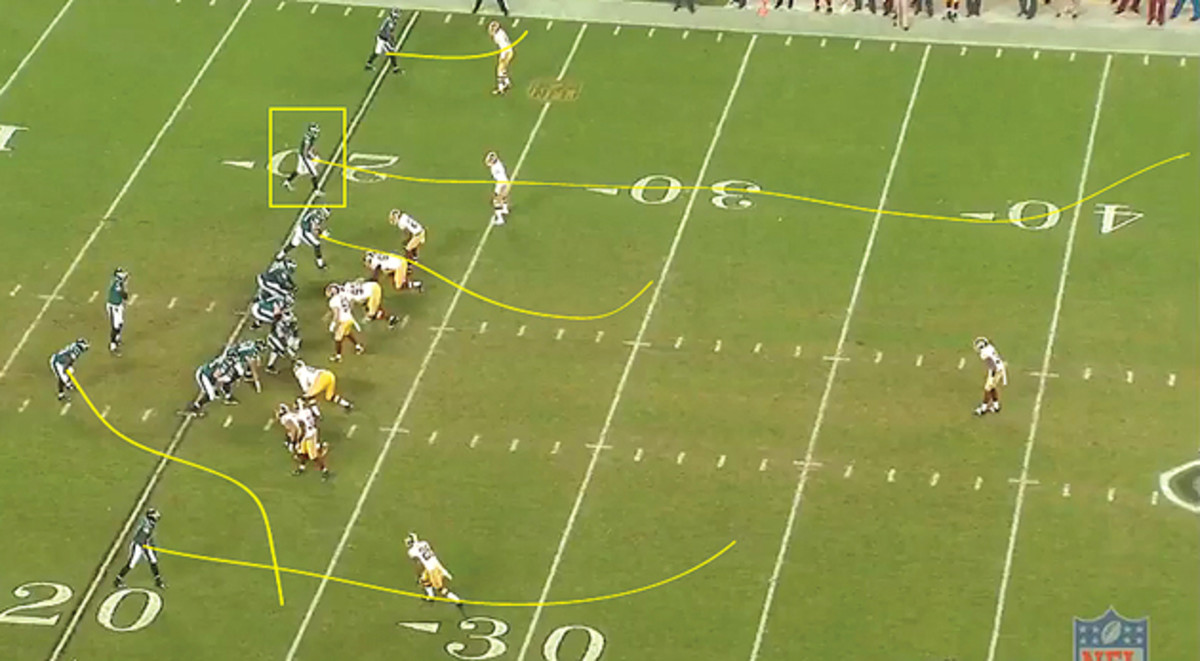
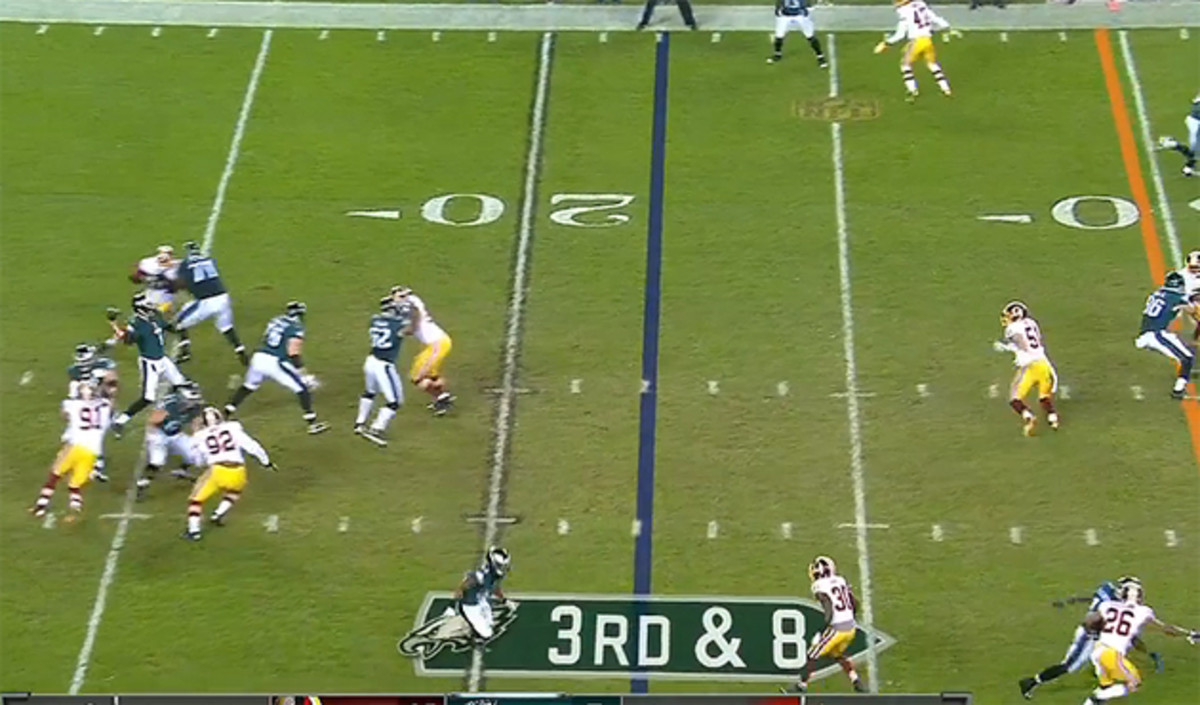
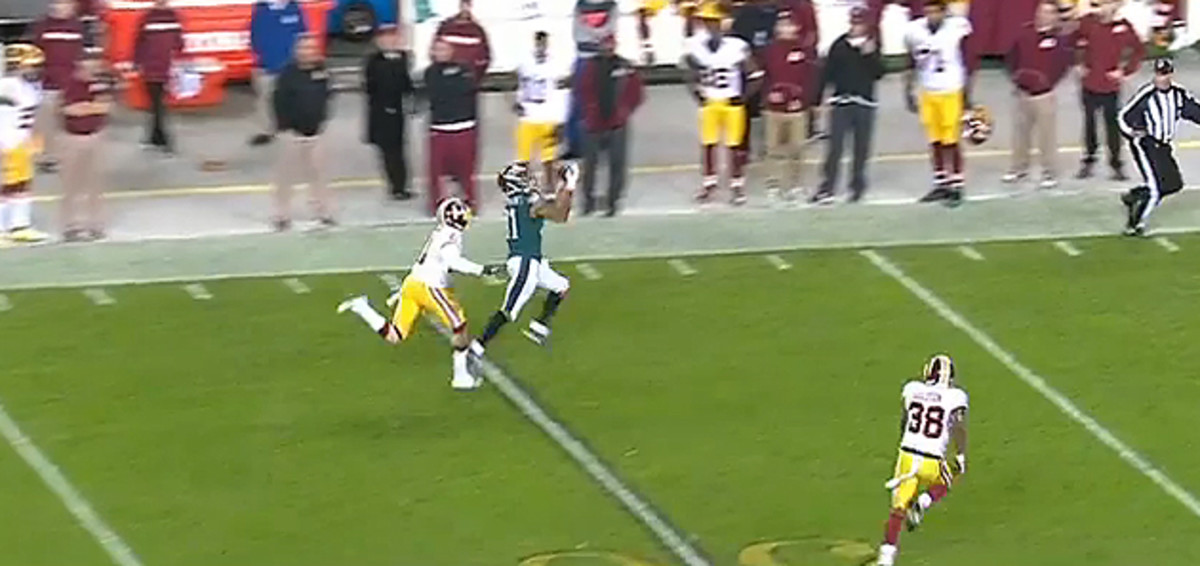
Under Pressure
Last season, Bradford threw seven of his 14 interceptions under pressure, compared with eight of his 19 touchdowns. Once again, his tendency to take what was given in those situations was a relative strength. Poise under pressure wasn’t Bradford’s biggest problem—that honor goes to a tentativeness that caused him to make some truly head-scratching decisions even with a clean pocket, especially early in the season. Often, instead of letting the route develop and taking the hit when necessary or simply throwing the ball away, Bradford would put drives in jeopardy by hurrying the throw. That’s why you don’t see a ton of examples of Bradford falling away under pressure. He’s trying to beat the pressure before it comes, which is not a sustainable pattern of success.
Take a look at the red-zone interception he threw to Cowboys linebacker Sean Lee in Week 2. Bradford has two tight ends as primary targets: Zach Ertz tries a little button-hook route near the back of the end zone, while Brent Celek runs a shallow cross at the goal line. Bradford reads Ertz’s side first and seems to believe that he has Ertz open as a back-door option, perhaps forgetting that a healthy Lee is one of the best cover linebackers in the NFL. He looks to his left and finds Celek tied up with linebacker Kyle Wilber and safety Barry Church. Here’s where it gets really odd—based on the position of Bradford’s helmet and the throw, he appears to be trying to look everyone off from Ertz and completely misses that Lee has Ertz covered. It also doesn’t help that he’s throwing flat-footed.
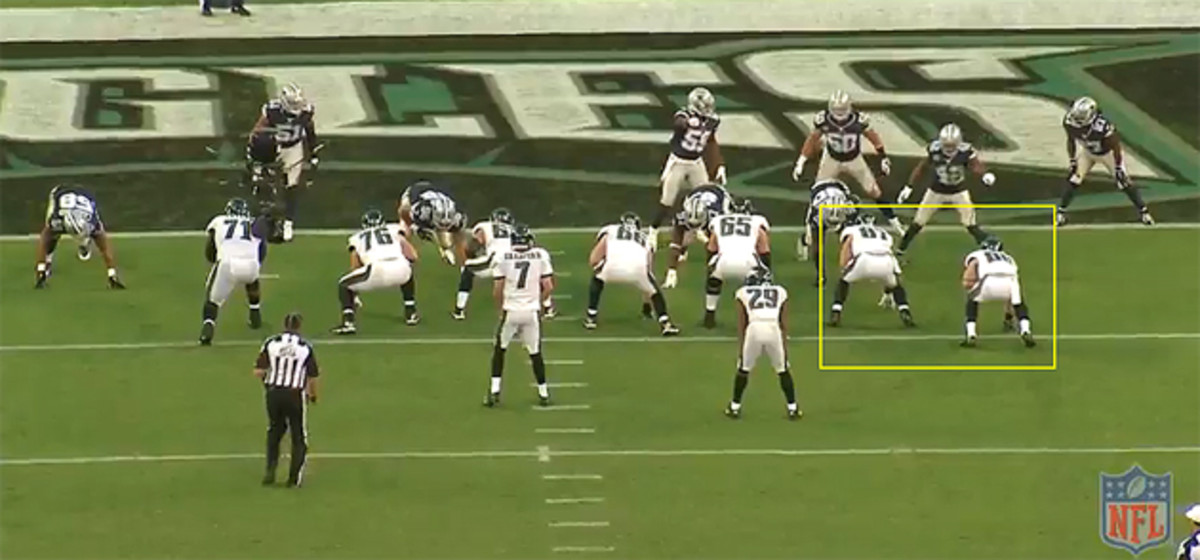
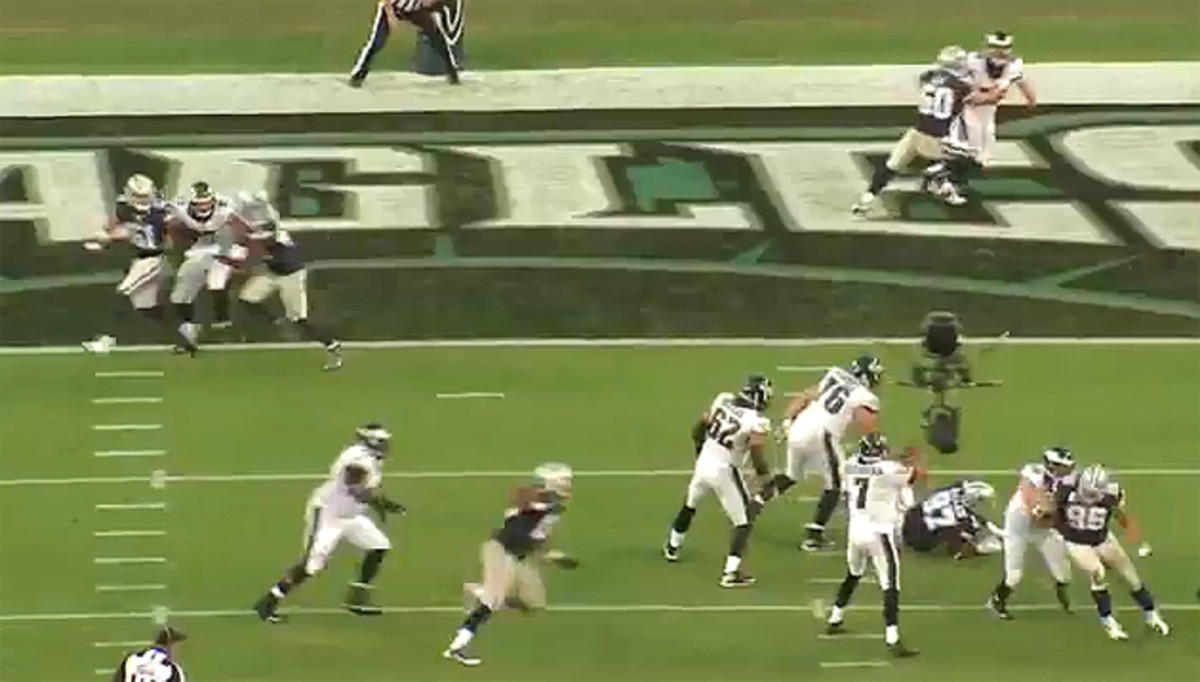
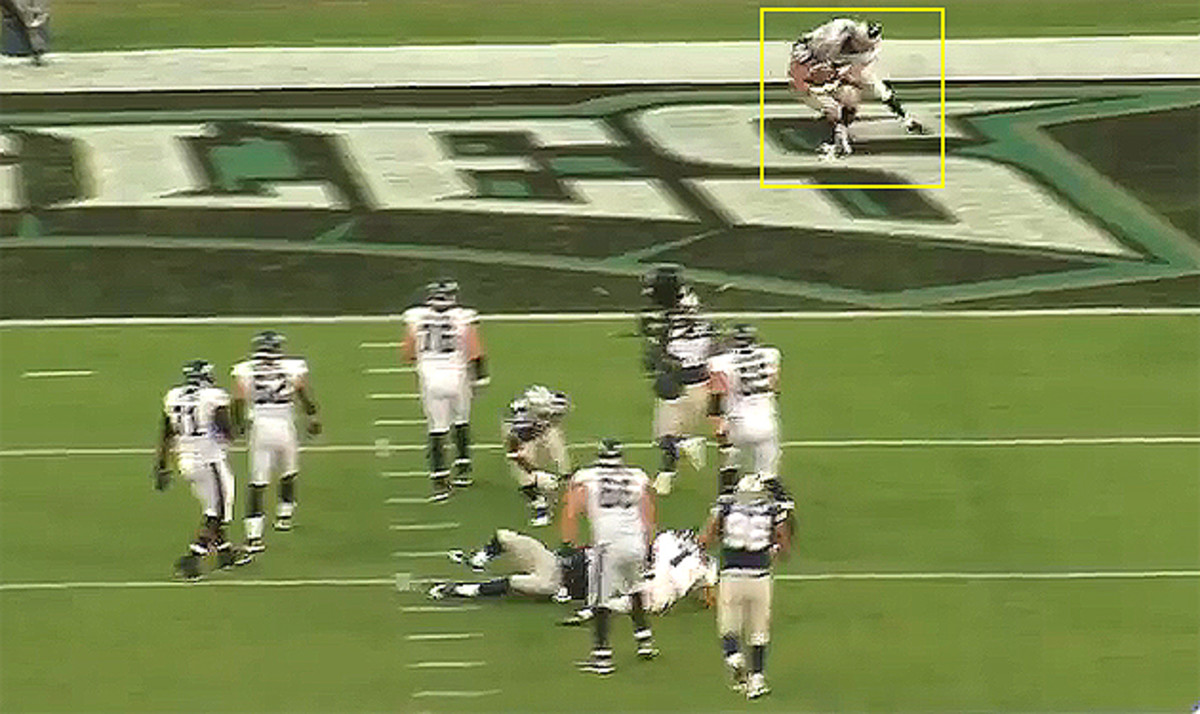
Accuracy
From an accuracy perspective, Bradford’s worst game of last season was a 27–7 win over the Giants in Week 6, when he threw three ugly picks. The first two were the result of Bradford and receiver Riley Cooper miscommunicating on routes. The third, shown below, was even worse: Bradford had an easy man coverage read off of motion, safety Landon Collins had tight end Zach Ertz bottled up, and Bradford mtried to force in the throw anyway. It’s a clear example of how Bradford still needs to work on his reads and patience in the pocket at times. Too often, Bradford struggled with reads in a simple offense and just didn’t get it done. He improved a bit as the year went on, but he still has a lot of things to work out to prove that he can quarterback a contender to the playoffs.
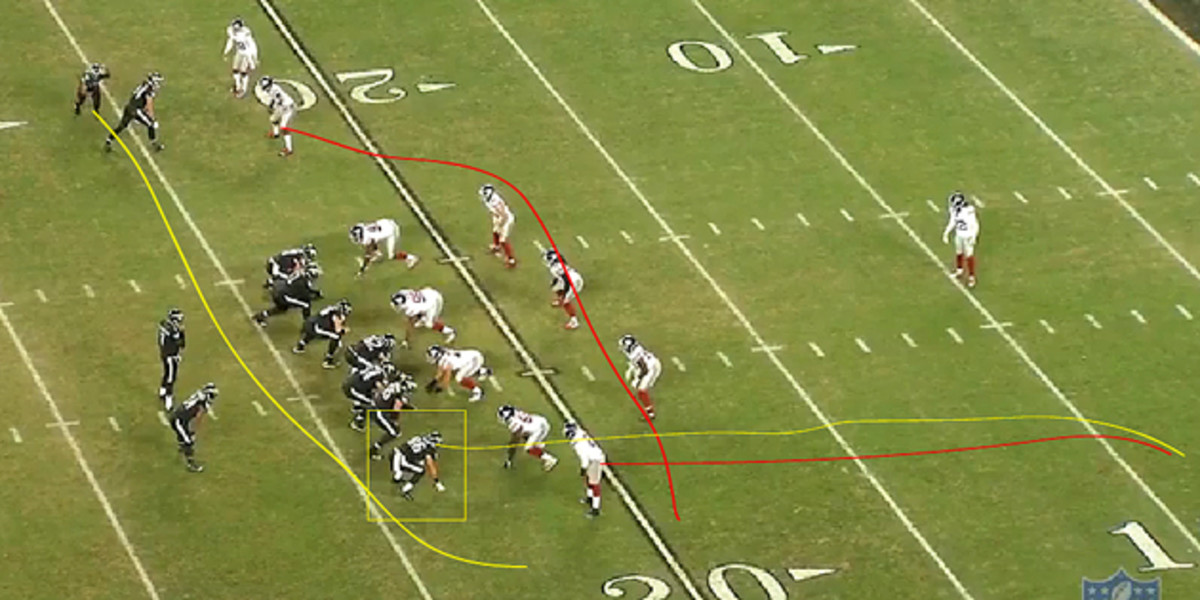
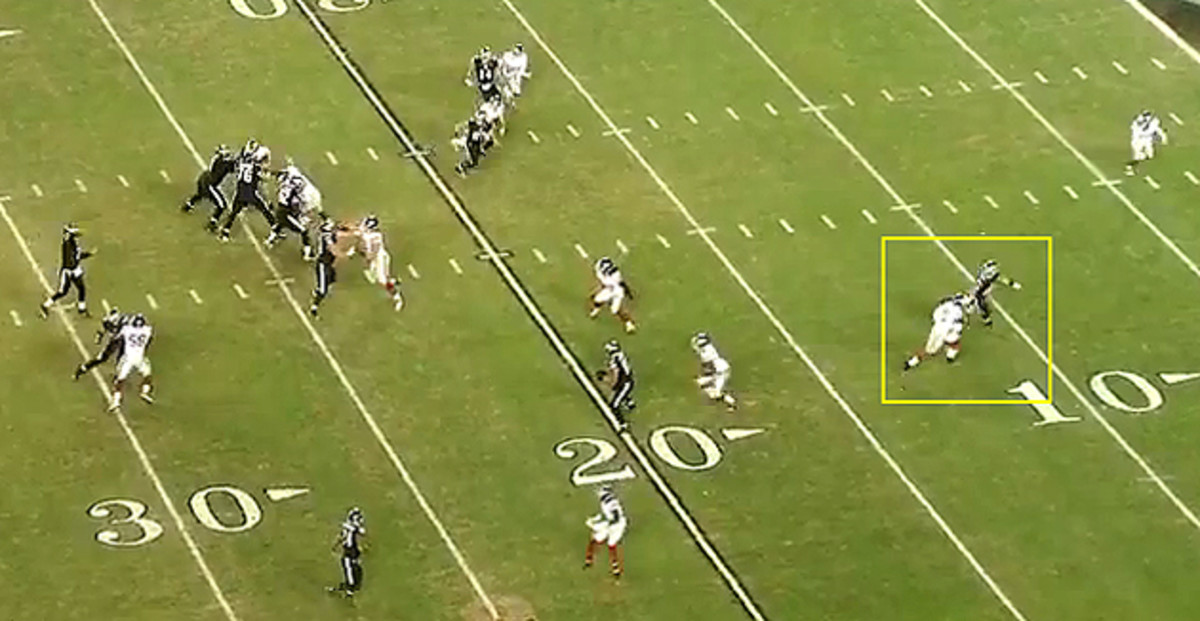
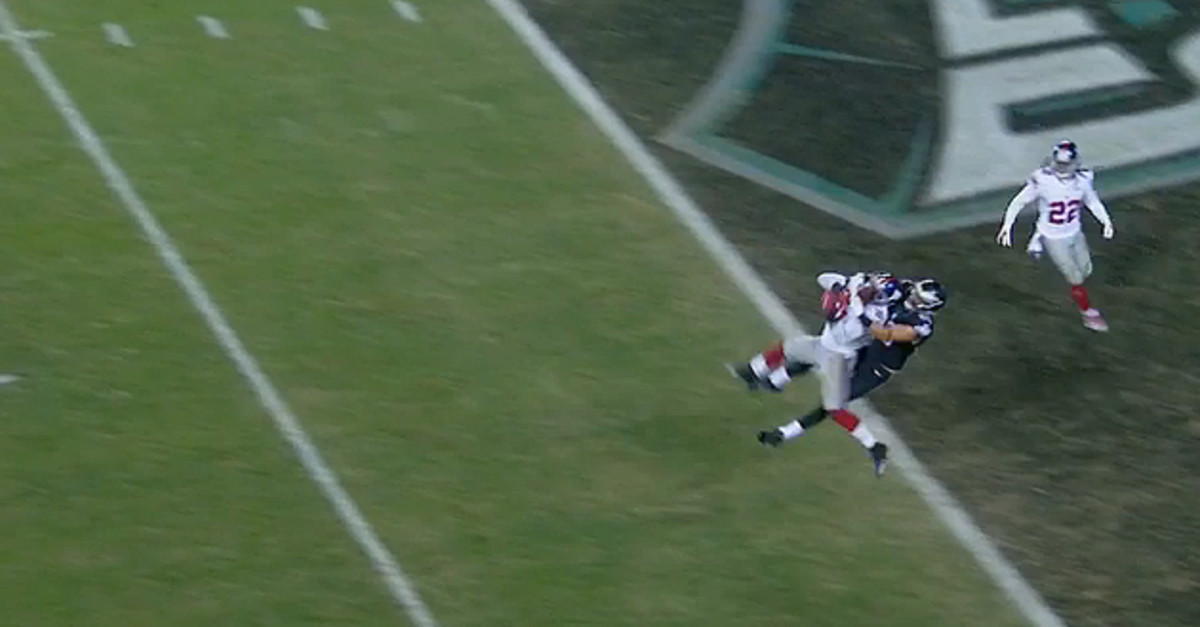
Conclusion
Bradford has overcome a lot throughout his career to become a perfectly serviceable option at the game’s most important position. But faced with what looks to be at most a two-year tryout for the Eagles’ new regime, he’s going to have to earn it all over again if he wants the long-term deal (or the fresh start) he sought this off-season. Can Bradford be one of the best in the game? He showed that potential in college, and he showed some flashes in the NFL, but his future as even a reliable starter is still cloudy, and only he can clear it up. Working with the Eagles’ new coaching staff to maximize his opportunities in 2016 would be the best possible first step.
